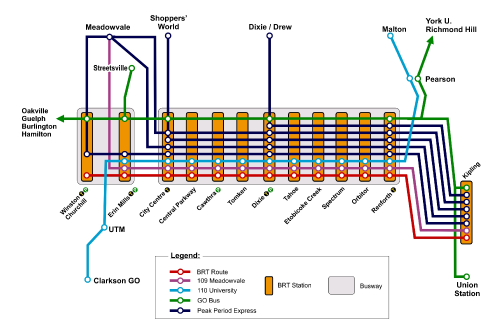RC8
Senior Member
I just don't see it.
I lived in Mississauga and I don't know when if ever I would have ever taken advantage of this transit way.
If I wanted to move along Hurontario transit was painfully slow and crowded. Same with Dundas and to a lesser extent Eglinton. The 110 was over capacity and deserved improvements. Burnhamthorpe was badly in need of relief, too.
Will there be, say, a much improved route from Kipling/Islington to Square One? Will they finally throw a 110 to UTM that doesn't need to stop at South Common? Will they significantly increase frequency on Mavis?
At least I'm assuming the bus between Square One and the airport will no longer take an hour.
P.S. If things were done as per the diagram early in this page I would be very happy. All the info that has come out since then has been rather confusing, though.
I lived in Mississauga and I don't know when if ever I would have ever taken advantage of this transit way.
If I wanted to move along Hurontario transit was painfully slow and crowded. Same with Dundas and to a lesser extent Eglinton. The 110 was over capacity and deserved improvements. Burnhamthorpe was badly in need of relief, too.
Will there be, say, a much improved route from Kipling/Islington to Square One? Will they finally throw a 110 to UTM that doesn't need to stop at South Common? Will they significantly increase frequency on Mavis?
At least I'm assuming the bus between Square One and the airport will no longer take an hour.
P.S. If things were done as per the diagram early in this page I would be very happy. All the info that has come out since then has been rather confusing, though.
Last edited:


